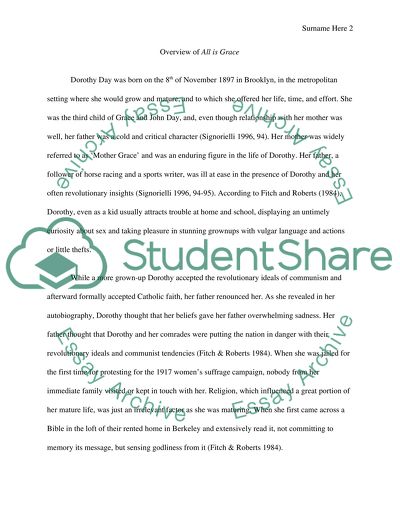Cite this document
(“Book Review of All is Grace. A Biography of Dorothy Day by Jim Forest Report/”, n.d.)
Retrieved from https://studentshare.org/religion-and-theology/1435225-book-review-of-all-is-grace-a-biography-of-dorothy
Retrieved from https://studentshare.org/religion-and-theology/1435225-book-review-of-all-is-grace-a-biography-of-dorothy
(Book Review of All Is Grace. A Biography of Dorothy Day by Jim Forest Report/)
https://studentshare.org/religion-and-theology/1435225-book-review-of-all-is-grace-a-biography-of-dorothy.
https://studentshare.org/religion-and-theology/1435225-book-review-of-all-is-grace-a-biography-of-dorothy.
“Book Review of All Is Grace. A Biography of Dorothy Day by Jim Forest Report/”, n.d. https://studentshare.org/religion-and-theology/1435225-book-review-of-all-is-grace-a-biography-of-dorothy.


